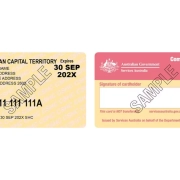Understanding the Impact of Superannuation Contribution Limits on Your Savings
Table of Contents
ToggleSuperannuation is one of the most effective tools Australians have to ensure a comfortable retirement. However, to truly maximise its benefits, it’s essential to understand the contribution limits imposed by the government. These limits play a pivotal role in shaping your long-term wealth and retirement prospects. Knowing how to navigate them can make a significant difference in growing your savings while maintaining tax efficiency. For those serious about building their super, staying within the bounds of contribution limits is crucial to avoid unnecessary penalties and make the most of their retirement strategy.
What are Superannuation Contribution Limits?
Superannuation contribution limits refer to the maximum amount of money that can be contributed to your super each year, divided into two categories: concessional and non-concessional contributions. The government imposes these limits to ensure that superannuation remains primarily a vehicle for retirement savings rather than an avenue for tax avoidance. Concessional contributions are taxed at a lower rate, while non-concessional contributions are made from after-tax income. These limits are designed to keep the system fair and prevent individuals from excessively contributing to their super to lower their taxable income. Understanding these caps is vital for effective financial planning.
Concessional Contributions
Concessional contributions include payments made into your super before tax is applied, such as employer contributions, salary sacrifice amounts, and personal contributions for which a tax deduction is claimed. These contributions are capped at $30,000 annually. They are taxed at a rate of 15%, which is generally lower than the marginal tax rate, making concessional contributions a tax-effective way to grow your super. However, exceeding this cap can lead to additional taxes and penalties, so it’s essential to monitor your contributions throughout the financial year to stay within the limit.
Non-Concessional Contributions
Non-concessional contributions are contributions made from after-tax income and are not taxed within the super fund. These contributions have a higher annual cap of $120,000, allowing individuals to significantly increase their super balance if they have additional funds to contribute. Non-concessional contributions are particularly useful for those who have reached their concessional limit but want to further boost their retirement savings. However, there is also a lifetime cap of $1.9 million, after which additional non-concessional contributions are prohibited. For high-net-worth individuals, this can be an important consideration in their overall retirement planning strategy.
The Bring-Forward Rule
The bring-forward rule allows individuals under the age of 75 to contribute up to three years’ worth of non-concessional contributions in one financial year, effectively increasing their limit to $330,000. This rule can be particularly advantageous if you’ve come into a large sum of money, such as an inheritance or the sale of an asset, and wish to boost your super in a short period. However, once the bring-forward rule is triggered, you are unable to make additional non-concessional contributions for the next two years. Careful planning is required to ensure you don’t inadvertently exceed your limits and incur penalties.
Exceeding the Contribution Caps
Contributing more than the allowed concessional or non-concessional caps can result in significant financial penalties. Excess concessional contributions are taxed at your marginal tax rate, with an additional charge to reflect the benefits of having initially paid the lower concessional rate. Excess non-concessional contributions are taxed at a punitive rate of 47%. Additionally, any excess contributions are counted towards your income and may affect your eligibility for certain government benefits. To avoid these penalties, it’s crucial to keep track of your contributions and consult with a financial adviser if you’re nearing the limit.
Salary Sacrifice
Salary sacrificing into super is a popular strategy for making additional concessional contributions while reducing your taxable income. By redirecting a portion of your pre-tax salary into your super, you lower your taxable income and benefit from the concessional tax rate of 15%. This strategy is especially useful for individuals in higher tax brackets, as it allows them to save on tax while simultaneously growing their super. However, salary sacrifice contributions count towards the concessional cap, so it’s important to ensure that your total contributions, including those made by your employer, do not exceed the annual limit of $30,000.
The Role of the Superannuation Guarantee in Your Contributions
The Superannuation Guarantee (SG) is the compulsory contribution that employers must make on behalf of their employees, currently set at 11.5% of your ordinary earnings. These contributions count towards your concessional cap, so it’s vital to factor them into your overall contribution strategy. While the SG provides a steady foundation for your super savings, it may not be sufficient to meet your retirement goals. For many, supplementing the SG with additional contributions, either through salary sacrifice or personal contributions, is necessary to build a comfortable retirement nest egg. Understanding how the SG fits into your broader plan is essential.
Catch-Up Contributions
If you haven’t used your entire concessional contribution cap in previous financial years, the Australian government allows you to carry forward the unused portion for up to five years. This is known as catch-up contributions, and it’s available to individuals with a total superannuation balance of less than $500,000. Catch-up contributions provide an excellent opportunity for those who may have taken time out of the workforce or were unable to contribute the maximum in earlier years to bolster their superannuation savings. It’s a flexible strategy that allows for greater contributions when financial circumstances permit.
The Impact of Contribution Limits on High-Income Earners
High-income earners face particular challenges with superannuation contribution limits. Given the caps on both concessional and non-concessional contributions, individuals earning substantial incomes may find that they max out their contributions relatively quickly. For these individuals, it’s important to explore alternative strategies for wealth accumulation beyond superannuation, such as investing in property, shares, or other vehicles. Financial planning is crucial for high-income earners to ensure that they maximise their super contributions while also growing wealth outside of the super environment. Consulting with a financial adviser can help tailor a strategy that balances tax efficiency with long-term growth.
Contributions and Retirement Planning
Effective retirement planning requires striking the right balance between superannuation contributions and other savings vehicles. While superannuation offers significant tax advantages, it is also subject to contribution limits and restrictions on access until you reach a certain age. It’s important to diversify your retirement savings across multiple investment vehicles, ensuring that you have access to sufficient funds before retirement while also growing your super balance for the long term. A tailored approach that considers your financial goals, risk tolerance, and time horizon is essential to achieving the right balance between super and other investments.
The Benefits of Seeking Financial Advice on Super Contributions
Navigating superannuation contribution limits can be complex, especially as the rules and caps frequently change. A financial adviser can provide valuable guidance in ensuring you stay within the limits while maximising your superannuation savings. For residents of Toowoomba, consulting with a local financial adviser like those at Wealth Factory can help you tailor your super strategy to your unique financial situation. Whether you’re looking to make the most of salary sacrifice, utilise the bring-forward rule, or explore catch-up contributions, professional advice ensures that your superannuation is optimised for long-term success.









